Key socioeconomic issues we must address to reduce poverty

Poverty is a multifaceted economic phenomenon. Although dealing with the causes of poverty in Bangladesh is complex, the country has nonetheless shown impressive improvements and resilience over the years. Before the coronavirus crisis, the number of extreme poor people was falling gradually. According to Bangladesh Bureau of Statistics (BBS) data, the poverty rate came down to around 20 percent in 2019 from 56.6 percent in 1990. The rate was around 75 percent in 1971. But now the picture is changing—due to Covid-19, the number of jobless people has increased drastically and income has fallen significantly in recent times. In an August 2020 report, the BBS revealed that between July 2019 and June 2020, the national poverty rate rose by 9 percent (from 20.5 percent to 29.5 percent). The South Asian Network on Economic Modeling (SANEM) forecasted that the rate would increase to 40.9 percent. Meanwhile, Bangladesh Institute of Development Studies (BIDS) projected that Covid-19 could push an additional 16.4 million people into poverty. All such predictions and data paint a rather bleak picture of our goal of ending extreme poverty by 2030. Therefore, unless we act now, a new rise in poverty along with the existing poor could seriously undermine the nation's development and damage our future economic well-being. Below are some issues that I think need urgent attention and policies that need to be restructured to bring the rest of our population out of poverty for good.
ECONOMIC GROWTH AND INCOME INEQUALITY
Economic growth is the major tool for fighting poverty. Although Bangladesh has observed steady growth in recent years, unfortunately, it has actually bypassed the major portion of the population while higher-income groups have been its main beneficiaries. There is no recent study on inequality, but a report titled, "Household Income and Expenditure Survey (HIES) 2016," published by the BBS shows that the rich-poor gap in terms of wealth accumulation has been widening in the country. The poorest 5 percent had 0.78 percent of the national income in their possession back in 2010, and now their share is only 0.23 percent. By contrast, the richest 5 percent, who had 24.61 percent of the national income in 2010, now has a higher share—27.89 percent to be precise. The report also shows that the income share of the bottom half of the population used to be 20.33 percent of the national income in 2010, but it has now fallen to 19.24 percent. In other words, the income of people higher on the economic scale has increased since the last HIES was conducted in 2010. Particularly, the top 10 percent of the population now has a greater income share (38.16 percent) compared to what they had (35.84 percent) in 2010. On the contrary, the bottom 10 percent now has half (just 1.01 percent) of what it had in 2010 (2 percent).
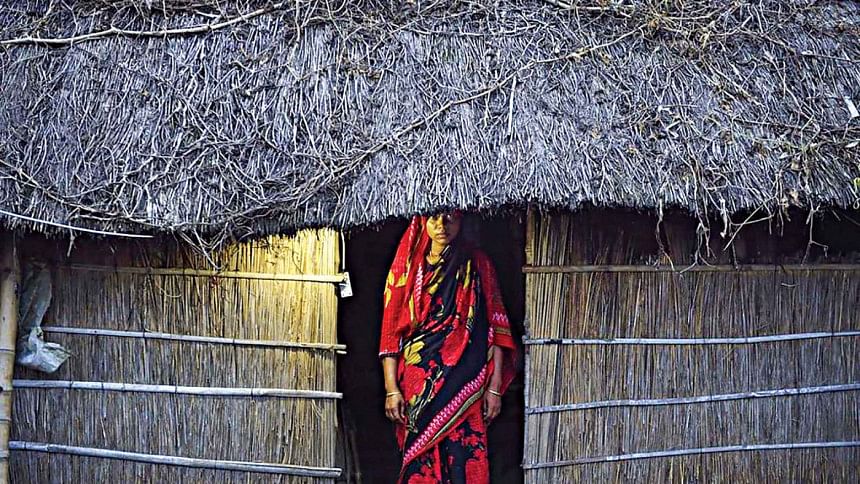
Different research suggests that Covid-19 is contributing to further widening of income inequality in Bangladesh. Income inequality and poverty are directly interrelated, the rise in income inequality reduces growth which in turn deepens poverty. The causes and factors of income inequality are multifaceted and complex. However, according to various studies, primary factors that deprive poor and vulnerable people of their most elementary rights and may lead to greater income inequality in Bangladesh include unequal access to education and employment opportunities, exploitation at workplace, low-wage jobs with scant benefits, high rates of youth unemployment, poor healthcare, corruption and lack of access to formal financial services such as credit, savings and insurance that higher income groups may take for granted.
Therefore, to overcome this problem, our policymakers need to put an end to the culture of excessively rewarding those at the top and start serving all people. They need to ensure "inclusive growth"—that is the share of economic benefits from growth must reach all citizens. Priority should be given on issues of social protection, good governance and policies of redistribution of wealth—moving money from those with too much of it to those with too little, through the tax and benefit system (i.e. by taxing the upper-income groups at higher rates) and spending the revenue in sectors and areas such as free/subsidised healthcare and education/skill development scheme for lower-income groups, so that they can get access to jobs that are more productive and rewarding.
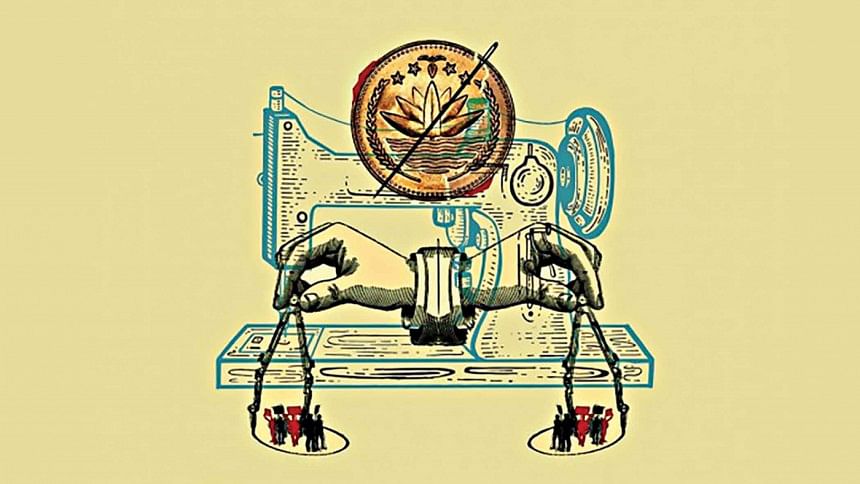
POPULATION, EDUCATION AND SKILLS
In general, the population of a country is seen as its most important economic resource, but unchecked population growth can be detrimental to economic development. Some empirical studies have found that sometimes rising population helps economic development and sometimes it slows development down. It actually all depends largely on how the population is managed. Take for example China; a number one country in terms of population but they have utilised their population in a positive manner by cultivating a high quality, skilled workforce so that they can enjoy both work and life. On the other hand, India, Nigeria, Democratic Republic of Congo, Ethiopia, and Bangladesh happen to be the most populous countries of South Asia and Sub-Saharan Africa, but unfortunately, these two regions together account for 85 percent of the world's poor. The primary reason behind this situation is that in the past decade, the Chinese government has invested heavily on education and provided poor people with the appropriate knowledge and vocational skills required to move from informal employment into higher paying jobs, something that has not happened to that extent in these countries.
Poverty and education are inextricably linked—access to quality education can open the door to jobs, resources, and skills by which economically and socially marginalised people can lift themselves out of poverty. Bangladesh has certainly made remarkable progress in expanding primary education, especially when it comes to raising student enrolment and bringing gender parity. However, different research suggests that while the enrolment rate is appreciably high at primary level, a large proportion of them don't make it to secondary schools. According to the Bangladesh Bureau of Educational Information and Statistics Report 2018, the dropout rate is 36 percent in secondary level education in the country, out of which 40.19 percent were girls and 36.01 percent were boys. And currently, there are about 4.3 million children in the age group of 6-15 who are out of school in Bangladesh. Also, a serious concern was raised that the quality and curriculum of our primary, secondary and higher secondary studies do not effectively serve the goals of human development and poverty eradication. There is a lack of adequate communication and collaboration between the government, academia and industry. According to a World Bank report titled, "An Early-Warning Indicator for The Human Capital Project", 55 percent of children are unable to read or write properly, or perform basic mathematical calculations even after five years at primary school and most of those who graduate from primary schools do not acquire the nationally defined basic competence.
Economists have, for a very long time, stressed that education has a significant role to play in poverty reduction in various ways. But faulty, divisive, discriminatory and contradictory education cannot produce good citizens, let alone take the country forward. Therefore, mere access to free primary schooling for poor children is not sufficient to ensure that they will do well enough to be able to compete successfully in today's competitive market. As such, we need to focus on improving the quality of education, the kind of education related to our life and its struggles which make poor children acquire necessary life skills so that they grow up with a truly global outlook and meet all the needs of the jobs of today and tomorrow. What is needed is a strategy of three Es: education, employability and employment. But this doesn't mean we should discard the old disciplines of reading, math, science, history, etc. While mainstream education is crucial and essential, targeted programmes are very much needed, teaching appropriate vocational subjects with the objectives of job creation and poverty reduction can only be realised through applicable education which empowers the products of the education system with skills and competence to become self-employed, so that they can help themselves climb out of poverty.
UNEMPLOYMENT AND UNDEREMPLOYMENT
At present, about two-thirds of our total population is of working age. The country is going through a "demographic window of opportunity"; but we need to understand that demographic dividend is not guaranteed or automatic—dividend comes of use when jobs are created, and when young people join the workforce. Although the country has experienced exceptional economic growth in recent years, it has failed to create adequate jobs for the millions of young Bangladeshis joining the workforce every year. Different studies show that between 2013 and 2017, while the average annual GDP growth was 6.6 percent, the average annual growth of jobs was only 0.9 percent. The employment share of the manufacturing sector actually declined from 16.4 percent to 14.4 percent. This is in addition to a decline in manufacturing jobs of 0.77 million and female employment of 0.92 million (Bangladesh Labour Force Survey cited by SANEM, 2018). The slow growth in job creation is also reflected in the declining employment elasticity over the last decade. The overall employment elasticity with respect to GDP growth declined from 0.55 during 2005-2010 to 0.25 in 2011-2018. What is worrying is that the share of the youth population not in education, economic activities and training (NEET) increased from 25.4 percent in 2013 to 29.8 percent in 2016-17—more than one-fourth of all young people are not participating in any form of economic or educational activities.
Moreover, our employment structure is characterised by the predominance of low-productivity and low-wage, and around 80 percent of the total labour force were employed in the informal sector, which is insecure, poorly paid and has no social security which in turn cannot contribute much to poverty reduction. The General Economics Division (GED) report titled, "Employment, Productivity and Sectorwise Investment Review-2018," confirms that at present, 21 lakh people are unemployed in the country. The report further says that there are 1.38 crore underemployed people in the country. Of them, 45.3 percent are in the service sector, 30.6 percent in the agriculture sector and 24.1 percent in the industry sector. Covid-19 is exacerbating these pre-existing conditions. According to a joint report of the International Labour Organisation and the Asian Development Bank, an additional 11.17-16.75 lakh youth in Bangladesh might be unemployed due to the massive disruptions in economic activities and labour market caused by the pandemic, which in turn could force many more into poverty.
This brings us to another important point: as the Covid-19 pandemic and economic crisis continues to spread, a significant number of migrant workers who have been contributing to the country's economic development while also providing better lives for themselves and their families have returned home after losing their jobs overseas. Their return would definitely put an additional pressure on the economy as well as create poverty pockets especially in migrant-prone areas. Therefore, urgent policy focus is required in engaging this young workforce, including the migrant workers, in productive activities. Since the momentum in job creation in Bangladesh has slowed in recent years, self-employment should be actively promoted. New research suggests that almost seven in 10 workers worldwide are self-employed or in small businesses. It is therefore imperative that policymakers must become more proactive in shaping favourable policies to develop small and medium-sized enterprises (SMEs), particularly the cottage micro small (CMS) enterprises at district and upazila levels to create more jobs for an unemployed, unutilised and growing labour force.
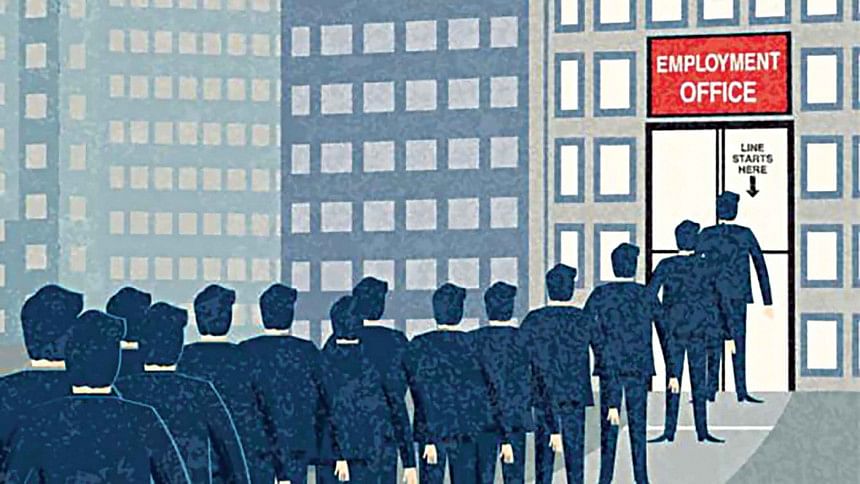
INVESTMENT
Despite steady economic growth of the country over the past decade, investment has been comparatively low in Bangladesh compared to regional peers. Investment to GDP ratio was 31.56 percent in FY 2018-19, out of which 23.40 percent came from the private sector and only 8.13 percent from the public sector. Private investment, which typically accounts for about 75 percent of the total investment, has been stagnating for the last few years. Industry experts say the deterrents that discourage investors include time-consuming bureaucracy, poor socio-economic and physical infrastructure, unreliable energy supply, corruption, low labour productivity, undeveloped money and capital markets, high cost of doing business, complicated tax system, delays in decision making, etc. Although Bangladesh advanced eight notches in the World Bank's ease of doing business 2020 ranking to 168 out of 190 countries, there are still significant bottlenecks in doing business. For instance, transferring a property title in Bangladesh takes an average of 271 days, almost six times longer than the global average of 47 days. Resolving a commercial dispute through a local first-instance court takes an average of 1,442 days, almost three times more than the 590 days' average among OED high-income economies.
Covid-19 has also impacted foreign direct investment (FDI) in Bangladesh. According to Bangladesh Bank (BB)'s provisional data, during the January-June period of 2020, net inflow of overseas investment stood at USD 1.15 billion, down by 31.79 percent, which was USD 1.69 billion in the same period last year. Investment (both foreign and domestic) is a key determinant of economic growth and development. It is also considered an engine for job creation. To attract more FDI and local investment, the government needs to address and remove the impediments that are responsible for the high cost of investment. Experts say, to encourage private investment, public sector investment is an important prerequisite. Therefore, to boost economic activity and create jobs, government should immediately initiate development projects such as roads, highways, flyover, water treatment plants, low cost housing and hygienic sanitation, hospitals for poor, etc., because these kinds of development work not only to generate direct and indirect employment opportunities, but also has a huge multiplier effect on the other sectors of the economy and stimulates the nation's social and economic growth as a whole, which in turn will reduce poverty. Since the government has limited financial resources, it may consider financing and implementing these large-scale development projects through public private partnerships (PPPs), such as build-operate-transfer, joint ventures, etc.

WATER, SANITATION, HEALTH AND NUTRITION
Safe drinking-water, sanitation and hygiene together with good nutritious food are not only fundamental to good health, but also crucial for social and economic development. Bangladesh has certainly made significant progress in selected social sectors but still more than 2 million people in the country lack access to an improved water source and 48 million lack improved sanitation. According to the report titled, "Promising Progress: A Diagnostic of Water Supply, Sanitation, Hygiene, and Poverty in Bangladesh", 41 percent of all improved water sources are contaminated with E. Coli bacteria, which suggests a high prevalence of faecal contamination. E. coli bacteria was present in 80 percent of private piped-water taps sampled across the country. Though the country has successfully eliminated the practice of open defecation. Still, about 50 million people use shared, rudimentary toilets, and only 28 percent of toilets are equipped with soap and water. In urban areas, slums have poor access to clean water and safe sanitation. Large-city slums have five times less access to improved sanitation, the report further confirms.
Different studies show that unsafe water and poor sanitation are linked to nutritional disadvantages in early-childhood that leads to long-term effects, including cognitive and growth deficits and a drop in immunity to infections. According to a report prepared by the Cabinet Division of the Government of Bangladesh and World Food Progamme (WFP), one in eight or more than 21 million people, cannot afford a nutritious diet in Bangladesh. According to the Food and Agricultural Organization (FAO), nearly two-thirds of the regular diet includes mostly rice, some vegetables, a little amount of pulses and small quantities of fish if and when available. Bangladesh is also lagging behind in providing appropriate nutrients to infants and young children—most suffer from high rates of micronutrient deficiencies, particularly vitamin A, iron, iodine and zinc deficiency. Worryingly, over the last decade, the number of undernourished people has risen by almost a million—from 23.85 million between 2004-06 to 24.2 million in 2018. The interconnections between health and the economy are well known. Without a healthy population, there can be no healthy economy. Healthy and well-nourished population will perform better in economic activities. Therefore, improving access to safe water, sanitation, and nutritious food will have a significant impact on a person's health, which in turn will positively impact their future income and break the poverty trap.
CONCLUDING THOUGHTS
In addition to factors discussed above, access to credit and financial services, low levels of female labour force participation, poor and inefficient infrastructure, climate change, good governance, corruption, etc., are also preventing the poor from escaping poverty. Now the Covid-19 crisis has added salt to the wound—many people have lost their jobs or seen their incomes decline, production of goods and services and investment have fallen. However, history suggests that tough times like these have made Bangladesh only stronger as a nation. It should be borne in mind that despite having periodical floods, cyclones, droughts, etc., in the last 50 years, Bangladesh as a nation has undergone an amazing transformation. There has been some good progress in almost all spheres of life, and now the country is being tagged in some circles as a "Role Model for Development". It's the resilience of the people of Bangladesh, their struggle for survival, their commitment and determination and their entrepreneurial ability which has made this endeavour possible. We have shown the world that given the right opportunities, there is no difficulty, which we cannot overcome.
The nation is set to celebrate the golden jubilee of Independence on March 26, 2021. But Independence Day this year came with an extra significance, as it coincided with the Father of the Nation's birth centenary celebrations—who always dreamt of a poverty-free Bangladesh. To materialise his dream, now is a good time for our policymakers and government planners to take a fresh vow to build a poverty-free Bangladesh. And to do so, the focus should be on developing appropriate socio-economic policies and design services that will reduce or eliminate the barriers that are disproportionately hurting poor people. Along with that, the government needs to develop a comprehensive social safety net programme to cover all segments of the vulnerable population, including the urban/rural poor, disabled, aged, street children, etc. Knowing well that poverty cannot be contained by the central government alone, it is therefore important to form strategic partnerships with local government, NGOs, development agencies and Community Based Organizations (CBOs) to carry out target based poverty alleviation programmes based upon the actual conditions of the poor, their needs and the background of those needs, so that poor people are able to lift themselves out of poverty in freedom and dignity to enjoy a decent standard of living.
Abu Afsarul Haider is an entrepreneur. Email: [email protected]
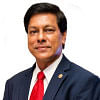
 For all latest news, follow The Daily Star's Google News channel.
For all latest news, follow The Daily Star's Google News channel. 


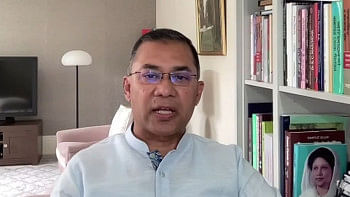
Comments